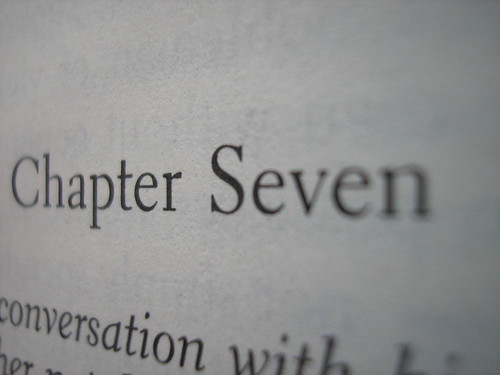Every book has just one definitive end, but each chapter is a small ending within the whole. Sometimes, the only way to move forward in a book is to end a scene and then jump to another point in the story. But how do you go about doing it all? Do you know how to write good chapter breaks and scene breaks?
Ending a Chapter
It's a tricky thing to end a chapter, trickier than most writers credit it to be. Each chapter ending should feel a bit like an ending, as if there is some small conclusion -- but at the same time, each chapter must compel the reader forward into the story. It's perfectly fine to create cliffhanger chapter endings, to move into a very tense and emotional scene and then end it abruptly only to have it continue in the next chapter. However, every chapter shouldn't read that way because readers like to come to natural stopping points within a book. Often, a chapter will end at the end of a day, a big event or an important conversation. The chapter that immediately follows will open with a new day, a new event, a new scene.
It's important for your writing to feel fluid, especially from one chapter to the next. You want your readers to get caught up in your story, to keep reading and feel unable to stop -- but sometimes, they do need to stop. It's a delicate balance, and only you can find the perfect one for your story. Look for the natural stopping points in your story, and make sure they're present. Look for fluid chapters that lead easily into each other, and be certain that's happening. Then you'll know you've mastered the art of ending a chapter.
Length is the least important of all factors in a chapter, though many authors do try to keep theirs even. You can always create a very short or very long chapter to produce a certain effect -- say the characters are going through a long journey, so you create a very long chapter so the reader really feels the length of the trip. Try to be fairly consistent with your chapter lengths, but always end a chapter when it feels most natural for you to do so. Good writing requires a lot of hard work and careful research, but some of it is pure instinct.
Ending a Scene
Ending a scene can be even harder than ending a chapter, because you'll be abruptly moving from one series of events to another all in the same chapter. It's also important to consider how to end a scene stylistically, so there's a lot going on when you suddenly shift gears in this fashion. When a scene comes to a natural conclusion (or an abrupt one, you're the writer) you have to immediately switch into something else -- but you've got to warn the reader it's happening.
It's common to create a scene break by inserting symbols, all alone, between your paragraphs. It's common to use three asterisks (***), but you can choose any symbols you like. Make it easy on yourself by choosing something on the standard keyboard. Don't create formatting headaches where they don't need to happen. If you'd like to go for a softer scene break, simply create a completely blank line between paragraphs.











Great blog here with all of the valuable information you have. From this blog i have got good and valuable information. In this post you wanted to share Writing 101: Chapter Breaks and Scene Break. I think this article will so useful and informative for every student. You should click to explore more.
ReplyDeleteThanks for sharing.
ReplyDeleteThanks for sharing.
ReplyDeleteYou chose your own GMAT and passed on, and you even understand which MBA programs you specifically wish to really go to. There is just something which worries youpersonally, and that's the exceptionally nerve-wrecking MBA announcement of purpose composition. check it and choose your option to write your papers.
ReplyDelete